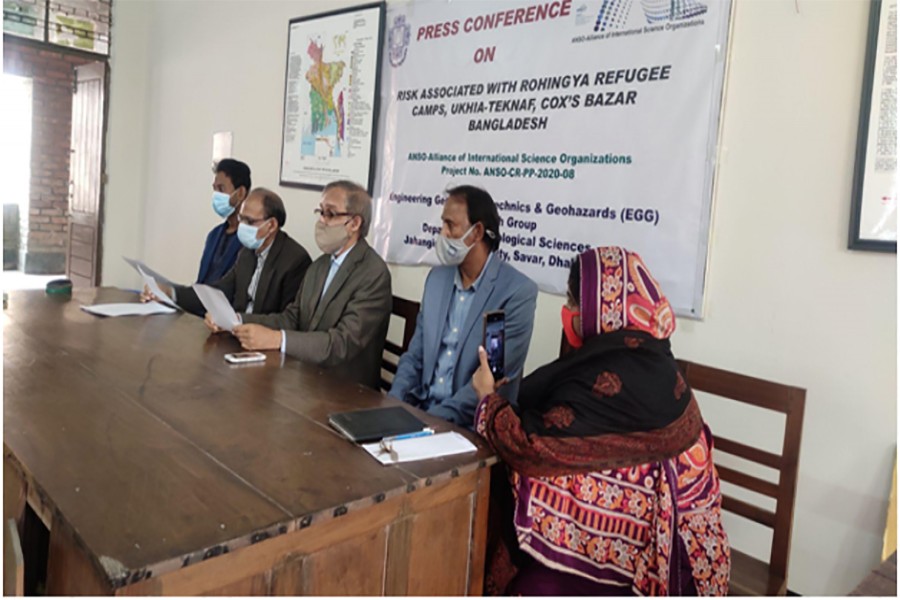Geologists and researchers of Jahangirnagar University (JU) predicted a humanitarian disaster at Rohingya Refugee camps in Cox's Bazar.
After about 9 month-long field research on geological aspects of the earth of Rohingya refugee camps, the researchers of the Department of Geological Sciences of JU held a press conference titled 'Risk associated with Rohingya Refugee camps, Ukhia-Teknaf, Cox's Bazar, Bangladesh" and unveiled the research finding at the university on Monday.
The research is being carried out by a team of Engineering Geology Researchers and Geological Engineering Faculties of Jahangirnagar University in collaboration with the Alliance of International Science Organisation (ANSO) China.
Prof Dr ATM Shakhawat Hossain explained the probability of happening humanitarian disasters in Ukhia abd Teknaf.
In his brief presentation, he said hills are at high risk during monsoon and earthquake-induced liquefaction hazards at an earthquake magnitude (M) of 5 (Five) or higher.
The camp hills are marginally stable to less stable with a factor of safety (Fs) value close to 1 or less than 1.
The Rohingya refugees reportedly destroyed the eco forests of Kutubpalong and Balukhali camps of Ukhia.
By cutting hill slopes, they constructed temporary shelters on the hills of the Ukhia and Teknaf camps. More than one million Rohingya refugees are now living in the temporary shelters of the camp areas. In addition, they are also using tree branches for cooking.
During the monsoon, every year the number of landslides with causalities and loss of property is increasing and threatening the overall sustainability of the Ukhia-Teknaf region.
It is necessary to take urgent measures to attain sustainability in the Ukhia-Teknaf region, according to a circulated press release from the conference. Government of Bangladesh and international communities must come forward to take prompt action for Rohingya repatriation.
As a short term measure, an alternative location must be found immediately by all communities, including the UN, for the long term social, economic and environmental balance in the areas
Based on the seepage and stability modelling results and ground conditions, a risk map has been prepared for the community to attain sustainability in the camp area.
Similarly, based on earthquake-induced liquefaction potentiality index value, another risk map will be produced both for Balukhali and Kutubpalong Rohingya camps.
After completion, all Risk maps will be supplied to the local communities, administrative authorities, NGO's, GoB officials, LGED, UNHCR and other international agencies to take immediate actions during pre and post disasters of monsoon raining and earthquakes to save lives and property.
In addition, motivation and educational campaign programmes will be conducted in 2022 and 2023 for the refugees as well as for the local inhabitants to understand the risk during hazards. The team is also planning to establish a landslide warning and monitoring system in the camp area in the near future.
Along with Prof Dr ATM Shakhawat Hossain, the press conference was attended by Prof Md Emdadul Haque, Dr Hossain Md Sayem, Dr Hasan Imam, Assistant Prof Mahmuda Khatun and other students from the Department of Geological Sciences, Jahangirnagar University.


